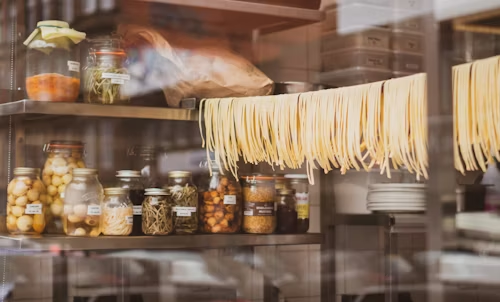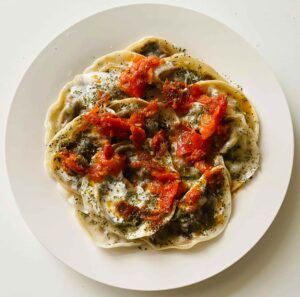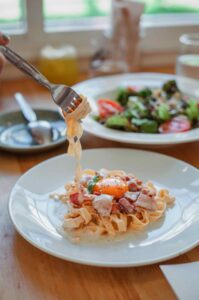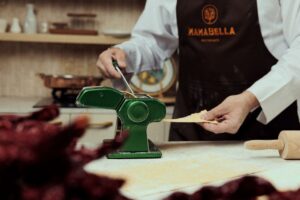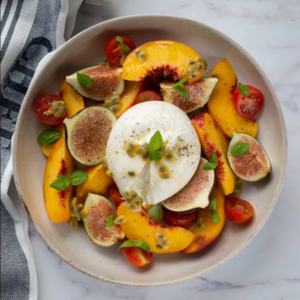Ever wondered why some pasta dishes taste so much better than others, even when they use the same sauce?
The answer often lies in choosing the right pasta shape. With so many Italian pasta types out there, it can be tricky to know which one works best for your favorite dishes.
Whether you’re cooking at home or ordering at a restaurant, understanding the types of pasta can help you make better food choices and enjoy your meals even more. Each pasta shape is designed to hold, absorb, or complement certain sauces and ingredients, making it much more than just a carb on your plate.
In this guide, we’ll walk you through the most common Italian pasta types served by Italian restaurants, explain what they pair well with, and help you choose the right one based on your meal. From short tubes to long strands and stuffed pasta to twisted spirals, there’s a shape and purpose for every pasta lover.
How Many Types of Pasta Are There?
It might surprise you to know that Italy has over 350 different types of pasta, and that number continues to grow as chefs create new shapes and variations. When people ask, “How many types of pasta are there?”, the answer can vary depending on whether you’re counting traditional shapes, regional variations, or modern innovations.
Each region in Italy has its own favorites, and many pasta shapes are deeply tied to local history, climate, and ingredients. The good news? You don’t need to memorize the entire pasta types list; just understanding a handful of them will go a long way in improving your cooking and dining experience.
Long Pasta: When to Use Spaghetti, Linguine, and Fettuccine
Let’s start with the most recognizable pasta types and names. Long pastas like spaghetti, linguine, and fettuccine are popular around the world and commonly used with oil-based or smooth sauces.
Spaghetti is thin, round, and works well with tomato-based sauces or meatballs. It’s also great with simple toppings like olive oil, garlic, and chili flakes. Linguine is slightly flatter and is often paired with seafood or pesto, as it holds light sauces well. Fettuccine, which is broader and flatter, is best known for creamy sauces like Alfredo or mushroom cream.
When choosing among Italian pasta types, remember that long pastas are better for thinner sauces that need to coat the noodles evenly. If the sauce is thick or chunky, you might want a different shape.
Short Pasta: Penne, Rigatoni, and Farfalle
Short pastas are a great choice for baked dishes, thick sauces, and salads. Some of the most loved pasta types and dishes use these shapes.
Penne is cylinder-shaped with angled edges, perfect for meat sauces or creamy cheese-based dishes. It captures sauce inside its tubes for a rich bite. Rigatoni is similar but larger, with ridges that help grip sauce even better. This makes it perfect for baked dishes like pasta al forno.
Farfalle, or bow-tie pasta, is commonly used in pasta salads or light tomato sauces. It looks fun and works well for both kids and adults.
These shapes are often more forgiving in the kitchen and are a great place to start if you’re new to exploring different types of pasta.
Twisted and Spiral Pasta: Fusilli and Rotini
Twisted shapes like fusilli and rotini are not just fun to look at, they’re also amazing at holding onto sauce. These types of pasta are perfect for thick sauces, chunky vegetables, and even cold pasta salads.
Fusilli has a corkscrew shape, which helps trap oil, cheese, or creamy sauces in every twist. Rotini is similar and works great in baked dishes or casseroles where the pasta needs to absorb a lot of flavor.
These pasta shapes are also great for meal prep, as they hold their shape well and reheat easily. If you’re making a dish in advance, spiral pasta is an excellent option to consider from your pasta types list.
Stuffed Pasta: Ravioli and Tortellini
Stuffed pasta brings a completely different experience to the table. These Italian pasta types are filled with ingredients like cheese, spinach, mushrooms, or meat, making them rich and hearty on their own.
Ravioli is typically square and often filled with ricotta or other soft cheeses. Tortellini is ring-shaped and usually filled with cheese or meat. Both are commonly served with a simple sauce like browned butter and sage or a light tomato sauce, so the filling remains the focus.
Stuffed pastas are more filling and are best saved for meals where they can shine as the main attraction. If you’re ever unsure about what to order at an Italian restaurant, going with fresh ravioli or tortellini is almost always a good choice.
Tiny Pasta: Orzo and Ditalini
Some types of pasta are so small that they’re often used in soups or stews. Orzo looks like large grains of rice but is actually pasta. It’s great in salads or served warm with butter and herbs. Ditalini is short and tubular, often used in dishes like pasta e fagioli or minestrone soup.
These pastas are easy to cook and perfect when you want something comforting but not too heavy. While they’re not as commonly seen on dinner menus, they’re essential to a complete pasta types list and offer a different way to enjoy Italian flavors.
Fresh vs. Dried Pasta: What’s the Difference?
In your journey through Italian pasta types, you’ll notice both fresh and dried options. Fresh pasta is made with eggs and flour, giving it a soft texture and quicker cooking time. It’s best used in delicate dishes or with light cream sauces.
Dried pasta is made from semolina flour and water, making it firmer and longer-lasting. It’s better for thicker sauces, casseroles, and dishes that require boiling or baking.
Both have their place, and many types of pasta dishes can be made with either, depending on your preference and the recipe’s needs.
Choosing the Right Pasta for the Right Sauce
A good rule of thumb is to match light sauces with long, thin pastas and pair thick, chunky sauces with short or ridged pastas. If your sauce is oil-based or broth-like, go for spaghetti, linguine, or angel hair. If your sauce is heavy, like a meat ragù or cheese sauce, opt for rigatoni, penne, or fusilli.
Understanding this basic pairing principle will help you use Italian pasta types correctly and create balanced, flavorful meals that feel restaurant-quality at home.
Conclusion
Pasta isn’t just pasta; it’s a world of shapes, textures, and flavors. Knowing a few key Italian pasta types can make all the difference in how your dish turns out. From thin strands of spaghetti to hearty tubes of rigatoni, every pasta has its purpose. Whether you’re cooking for yourself or ordering at a restaurant, choosing the right pasta brings out the best in your sauce, your ingredients, and your overall meal experience. And if you’re looking for a place that celebrates true Italian flavor, Mama Bella is the perfect spot. From handcrafted pastas to sauces made the traditional way, every dish brings Italy to your plate. For reservations or inquiries, feel free to contact +999 999 99 99 or email contact@mamabella.co, your perfect pasta experience is waiting.
Frequently Asked Questions
Can I use the same pasta shape for every dish?
While you can use any pasta shape, choosing the right one improves the texture and flavor. Long pasta suits light sauces, while short or ridged pasta holds thicker sauces better. It’s worth matching the pasta to the dish.
Are all pasta types made from the same ingredients?
Most traditional pastas are made from semolina flour and water, but fresh pasta often includes eggs. Some gluten-free versions use rice, corn, or chickpea flour, making pasta accessible to different diets while maintaining great texture.
Is fresh pasta better than dried pasta?
Not necessarily. Fresh pasta is softer and cooks faster, which is ideal for delicate sauces. Dried pasta is firmer, with a longer shelf life, perfect for hearty sauces and baked dishes. The choice depends on the dish you're preparing.
Can pasta shapes affect cooking time?
Yes, pasta shapes and thicknesses impact cooking time. Thin strands like angel hair cook in 2–3 minutes, while thicker shapes like rigatoni or stuffed pasta can take up to 12 minutes. Always check the package or taste test.
How do I store leftover cooked pasta?
Let the pasta cool, then store it in an airtight container in the fridge for up to three days. To reheat, add a splash of water or sauce and warm it on the stove or in the microwave for best results.
